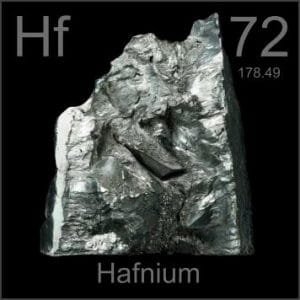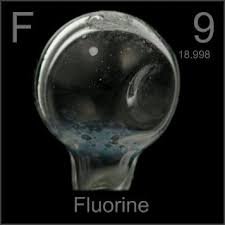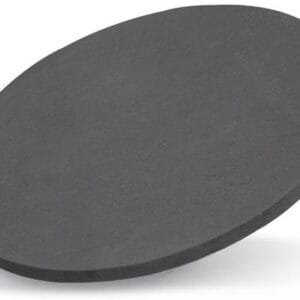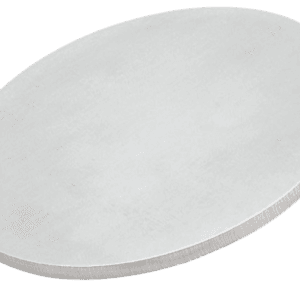Hafnium Fluoride Sputtering Target Description
Hafnium fluoride sputtering target is a ceramic material composed of hafnium and fluorine, typically represented by the chemical formula HfF₄. This material is used in various applications, including thin film deposition, where it serves as a source for creating coatings and layers in semiconductor, display, LED, and photovoltaic devices, as well as in other specialized optical and electronic applications.
 Hafnium is a chemical element named after Copenhagen, Denmark (Latin: Hania). It was first identified in 1911 by G. Urbain and V. Vernadsky. The element was later isolated and officially documented by D. Coster and G. von Hevesy. Hafnium is represented by the symbol “Hf” in the periodic table and has an atomic number of 72. It is located in Period 6, Group 4, within the d-block, and has a relative atomic mass of 178.49(2) Dalton, with the value in brackets indicating the measurement uncertainty.
Hafnium is a chemical element named after Copenhagen, Denmark (Latin: Hania). It was first identified in 1911 by G. Urbain and V. Vernadsky. The element was later isolated and officially documented by D. Coster and G. von Hevesy. Hafnium is represented by the symbol “Hf” in the periodic table and has an atomic number of 72. It is located in Period 6, Group 4, within the d-block, and has a relative atomic mass of 178.49(2) Dalton, with the value in brackets indicating the measurement uncertainty.
Related Product: Hafnium Sputtering Target
Fluorine, also known as fluorin, is a chemical element with the symbol “F” and atomic number 9. The name fluorine is derived from the Latin word ‘fluere,’ which means “to flow.” It was first mentioned in 1810 by A.-M. Ampère, with its isolation later achieved and announced by H. Moissan. Fluorine is located in Period 2 and Group 17 of the periodic table, belonging to the p-block. Its relative atomic mass is 18.9984032(5) Dalton, with the number in brackets indicating the uncertainty in the measurement.
Hafnium Fluoride Sputtering Target Application
The hafnium fluoride sputtering target is widely used in various high-tech applications, including thin film deposition for decoration, semiconductor manufacturing, displays, LEDs, and photovoltaic devices. It is also employed in functional coatings, optical information storage, glass coatings for automotive and architectural glass, and optical communication systems. This material’s unique properties make it suitable for enhancing the performance and durability of these products.
Hafnium Fluoride Sputtering Target Packing
Our hafnium fluoride sputter targets are meticulously tagged and labeled externally to guarantee accurate identification and quality control. We take exceptional care in packaging and handling to prevent any damage during storage and transportation, ensuring that our products reach you in optimal condition.
Get Contact
TFM offers Hafnium Fluoride Sputtering Targets in various forms, purities, sizes, and prices. We specialize in high-purity thin film deposition materials with optimal density and minimal grain sizes, which are ideal for semiconductor, CVD, and PVD applications in display and optics. Contact Us for current pricing on sputtering targets and other deposition materials that are not listed.


 MSDS File
MSDS File




Reviews
There are no reviews yet.